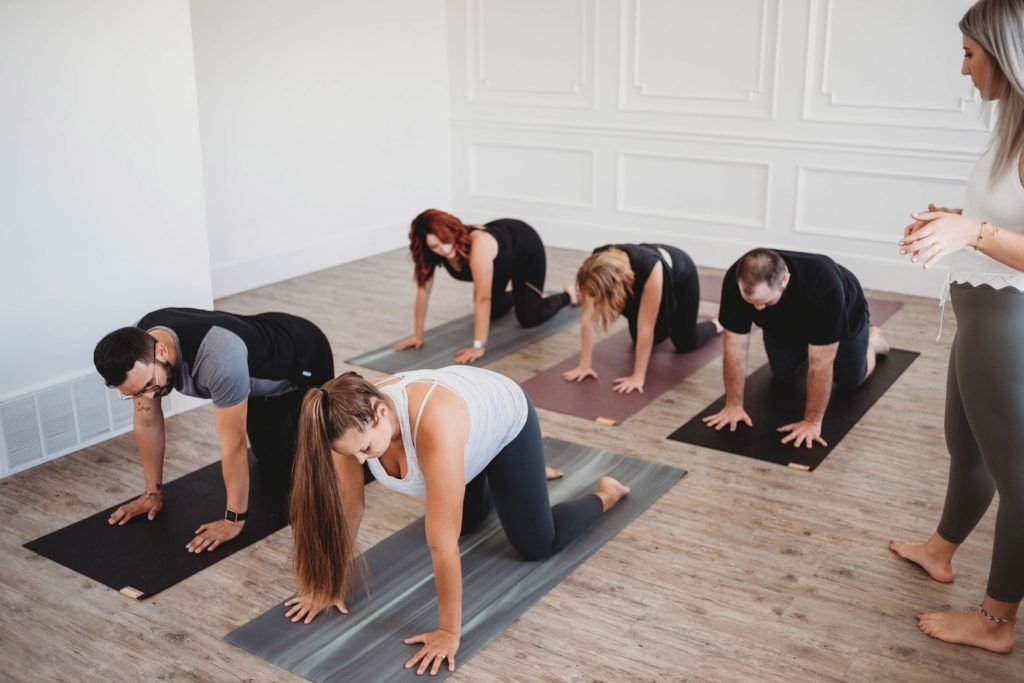Change Up Your Yoga Cues
As yoga teachers, we face different learner types in every class we teach. Some people are visual learners. Demonstrating poses clicks in for this group. Others respond to manual adjustments. (There’s also a substantial number of people who prefer not to be manually adjusted, especially without permission. But that’s another post.) Still others are verbal learners. For that group, we use yoga cues.
Last year, I posted a blog on how to simplify your cues to give students some quiet time as well to allow them to tune into the present experience of each asana. Today I’d like to tune in a bit more to language.
Why Change Up Your Yoga Cues?
I have been blessed with many long-term yoga students. Recently, a student who’s been attending my classes for 30 years told me that I said something in the class that completely transformed her practice. I was shocked—and pleased. The cue was something I’ve said countless times before. (Do you ever get tired of hearing yourself give the same yoga cues? I do!) Anyway, in this recent case, I changed the wording a bit, and in that moment, my student understood something she hadn’t gotten before.
Our students vary not only in their responses to visual and verbal learning. They also vary in their response to different words. Changing your language just might give even your most stalwart students a new way of experiencing their practice.
As a writer, I’m constantly striving to use words that are more descriptive and less generic—without becoming overly flowery. This is harder to do on the fly, when I’m teaching a class. But it’s doable. Here are a few ways to explore expanding your yoga vocabulary.
A Few Suggestions
The best way to reword your yoga cues is to reflect on what you’re about to say ahead of time. You might be able to do this on the fly, especially if you teach a slower-paced, non-vinyasa-type class. Before you find yourself about to speak your tried-and-true yoga cue, stop yourself for a moment. Is there another way to convey what you’re about to say? Maybe the cue you’ve always used really is the best way to get your point across. But it can’t hurt to try another wording.
If it’s easier, you can explore changing up your cues when you’re not teaching. Make a list of your most common yoga cues. Most likely, your preferred wording will come to mind first. Write it down. Then think about how you might word it differently.
It can be really instructive to record a few classes. Then listen to how you communicate your yoga cues. Can you come up with creative ways to convey the concepts you want to share, without losing clarity?
I find coming up with creative wording to be a great way to juice up my teaching. It not only helps me reach more students, but it also keeps my own teaching fresh. Teaching yoga is an ever-changing process. Changing up your yoga cues can help you evolve as a teacher.
Leave a Reply Cancel reply
Recent Comments
Archives
- November 2025
- October 2025
- September 2025
- August 2025
- July 2025
- June 2025
- May 2025
- April 2025
- March 2025
- February 2025
- January 2025
- December 2024
- November 2024
- October 2024
- September 2024
- August 2024
- July 2024
- June 2024
- May 2024
- April 2024
- March 2024
- February 2024
- January 2024
- December 2023
- November 2023
- October 2023
- September 2023
- August 2023
- July 2023
- May 2023
- March 2023
- August 2022
- July 2022
- June 2022
- May 2022
- April 2022
- March 2022
- February 2022
- January 2022
- December 2021
- November 2021
- October 2021
- September 2021
- August 2021
- July 2021
- June 2021
- May 2021
- April 2021
- March 2021
- February 2020
- January 2020
Theme by The WP Club . Proudly powered by WordPress
